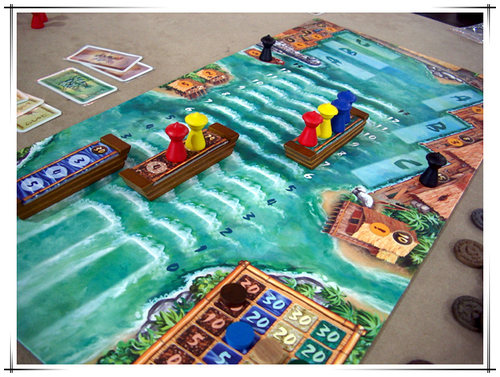撰写了文章 发布于 2017-07-03 11:01:22
A technical review from cost and return perspective
Manila apparently attracts less attention than it deserves. Part of the reason is because that most gamers do not possess the mindset to understand how the game mechanics works and why it is beautifully designed.
In contrary to many reviews which categorise the game as amidst gambling and bidding, Manila provides a perfect system which resembles the risk and return in real market place. I shall elaborate this point from three perspectives.
Firstly, the positions where player's meeples hold depict a cost and return. The positions are well designed to reflect a positive relationship between risk and return. Higher risk (less likely event) is associated with higher returns and vice versa. Hence players are not gambling but calculating.
Secondly, even more clever, the game designs perfect system for players to place influence over the events to avoid pure randomness to ruin strategy. I guess not many gamers are fully aware of the value of the fleet leader and the bid for harbour master at the first a few rounds, or even after a few games.
Thirdly and most impressively, there is a hedging system in present to perfectly mitigate risk, and thus allow completely different style of play. Most conservative players can always secure a very low level of profit. Aggressive players may try their luck with great potential returns.
Overall, Manila is a game of investment and return. Each decision making is associated with calculation of potential risk. It is challenging for players to fully understand their strategy as this is a deep game. Dice is only a camouflage which makes the game fun but not random at all.
My advice is that you need at least four players to play. Three players make the game obviously biased. Four players work perfectly with luck and strategy. Five players make the game more fun and also more random but less control for strategic players. Guess what, a group of players with financial literacy will find the game very interesting for its mimic of commodity price, risk and return, random walk market, hedging, venture investing, and even insider trading. Gamers who are not interested in making money cannot be bothered by this game.
(Game review initially published on BoardGameGeek)






